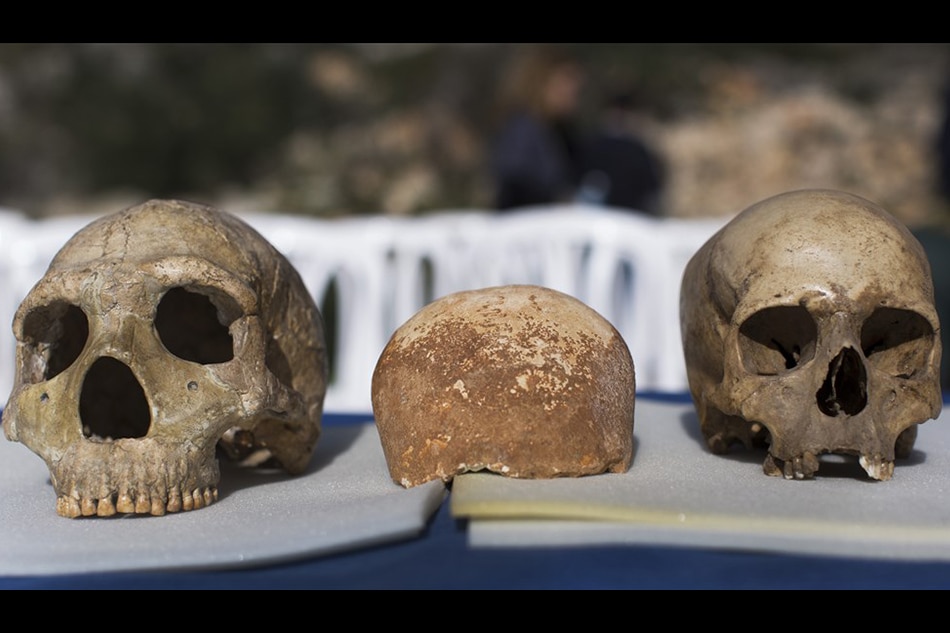Fossil discovery adds to evidence humans reached Southeast Asia over 80,000 years ago | ABS-CBN
ADVERTISEMENT

Welcome, Kapamilya! We use cookies to improve your browsing experience. Continuing to use this site means you agree to our use of cookies. Tell me more!
Fossil discovery adds to evidence humans reached Southeast Asia over 80,000 years ago
Fossil discovery adds to evidence humans reached Southeast Asia over 80,000 years ago
ABS-CBN News
Published Jun 29, 2023 09:42 PM PHT
Filipino part of a team that led to the discovery
Filipino part of a team that led to the discovery
MANILA — When did modern humans reach Southeast Asia after leaving Africa?
MANILA — When did modern humans reach Southeast Asia after leaving Africa?
A new study is offering fresh evidence to support that modern humans arrived in Southeast Asia as far back as 86,000 years ago, or almost 20,000 years earlier than previously thought.
A new study is offering fresh evidence to support that modern humans arrived in Southeast Asia as far back as 86,000 years ago, or almost 20,000 years earlier than previously thought.
Fossils unearthed from Tam Pà Ling, a cave in northern Laos, helped an international team of archeologists push back the period when humans, or Homo sapiens, were present in mainland Southeast Asia.
Fossils unearthed from Tam Pà Ling, a cave in northern Laos, helped an international team of archeologists push back the period when humans, or Homo sapiens, were present in mainland Southeast Asia.
Their analysis was published on June 13 in the prestigious journal Nature.
Their analysis was published on June 13 in the prestigious journal Nature.
ADVERTISEMENT
A mainstream theory proposes that humans left Africa in a single wave and moved along the coast from Africa through southern Arabia and India all the way to Australia.
A mainstream theory proposes that humans left Africa in a single wave and moved along the coast from Africa through southern Arabia and India all the way to Australia.
And earlier fossil discoveries showed that modern humans had reached Southeast Asia and Australia prior to 60,000 years ago.
And earlier fossil discoveries showed that modern humans had reached Southeast Asia and Australia prior to 60,000 years ago.
“This discovery is helping us better understand the distribution of our direct ancestors at a time when we know other populations of humans, now extinct, existed,” Vito Hernandez, a Filipino geoarchaeologist who is part of the team that published the recent findings, said in a news release.
“This discovery is helping us better understand the distribution of our direct ancestors at a time when we know other populations of humans, now extinct, existed,” Vito Hernandez, a Filipino geoarchaeologist who is part of the team that published the recent findings, said in a news release.
"This proves that our human ancestors also traveled along forests and river valleys apart from following islands and coastlines as they moved eastward to Australia, where they are controversially thought to have migrated as early as 65,000 years ago," Hernandez said.
"This proves that our human ancestors also traveled along forests and river valleys apart from following islands and coastlines as they moved eastward to Australia, where they are controversially thought to have migrated as early as 65,000 years ago," Hernandez said.
The Filipino geoarchaeologist added that the analyses suggested that modern humans were part of an immigrant population.
The Filipino geoarchaeologist added that the analyses suggested that modern humans were part of an immigrant population.
ADVERTISEMENT
However, he said, it is yet to be determined whether or not their genetic line has survived in current populations.
However, he said, it is yet to be determined whether or not their genetic line has survived in current populations.
CHALLENGE
Dating the fossils from Tam Pà Ling proved to be challenging in the initial stages of the study, casting doubt on the pieces of evidence that had been previously recovered from the cave.
Dating the fossils from Tam Pà Ling proved to be challenging in the initial stages of the study, casting doubt on the pieces of evidence that had been previously recovered from the cave.
But the team's geochronology and geoarchaeology specialists found a way to strategically apply techniques to determine a precise age for the fossils and sediments and how they relate to each other.
But the team's geochronology and geoarchaeology specialists found a way to strategically apply techniques to determine a precise age for the fossils and sediments and how they relate to each other.
"The dating and the quality of fossil preservation [are] important," said Hernandez.
"The dating and the quality of fossil preservation [are] important," said Hernandez.
"But as we’ve also seen from our research and other human evolutionary research like in Denisova cave in Russia, a very close collaboration between the Earth and Human sciences is necessary if we are to achieve a more complete picture of how humans evolved and settled into different parts of the world," he said.
"But as we’ve also seen from our research and other human evolutionary research like in Denisova cave in Russia, a very close collaboration between the Earth and Human sciences is necessary if we are to achieve a more complete picture of how humans evolved and settled into different parts of the world," he said.
ADVERTISEMENT
Hernandez obtained his Master of Science at the University of the Philippines School of Archaeology and taught undergraduate classes in Archaeology.
Hernandez obtained his Master of Science at the University of the Philippines School of Archaeology and taught undergraduate classes in Archaeology.
— with a report from Agence France-Presse
ADVERTISEMENT
ADVERTISEMENT



